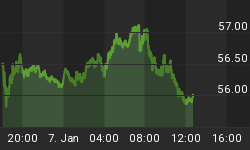Ivan Pavlov, the well-known Russian physiologist, was once invited to be the house guest of Vladimir Lenin, the father of the Bolshevik Revolution. Pavlov was convinced that his research on conditional reflexes and inhibitions would someday be a help in alleviating human suffering. Lenin, however, had other ideas. During a three-month stay at Lenin's house, Pavlov completed a 400-page manuscript for the Communist dictator detailing his discoveries. After reading the manuscript Lenin reportedly said, "You have saved the Revolution."
The gist of Pavlov's findings was that it was possible to induce "artificial neurosis" in dogs and human beings using conditioned reflex techniques.
In his famous experiments with dogs, Pavlov devised three scientific methods for producing neurosis in animals. One method involved overstraining or overexciting a group of dogs with extremely strong stimuli. A second method involved overstraining the inhibitory group with a strong or very prolonged inhibition. The third method involved colliding the excitatory and inhibitory processes, thereby producing neurosis.
In Pavlovian terms, artificial neurosis is created by a "continually increasing tension of the excitatory process." Secondly, according to Pavlov, "The inhibitory process likewise may be weakened either through strain or through collision with the excitatory process. Its weakening results in abnormal predominance of delay and other normal phenomena of which inhibition is a part, expressed also in the general behavior of the animal, struggling, impatience, unruliness, and finally as pathological phenomena, e.g., neurasthenic irritability; in man as a hypomaniac or manic condition."
The Fed understands Pavlov and has perfected his techniques as applied to the financial markets. The Fed continually relies on Pavlov to complement its monetary policies, as can be readily seen by even the most cursory examination of U.S. economic history. To see Pavlovian techniques at work we need look no further than the period between 1924-1929. This was a time of great excitation, which was brought about by the Fed's inflationary policy leading into that time frame. This produced not only speculative froth in the securities market (and also in real estate in some regions of the country) but also psycho-social exuberance among the public. This was the Pavlovian equivalent of "continually increasing tension of the excitatory process."
The "Roaring '20s" stimulus period of American history was followed by the "prolonged inhibition" of the Great Depression of the 1930s. This was part of the two-step stimulus/inhibition scheme formulated by Pavlov as it was beginning to be applied by the Fed in its monetary policies. The Fed used this to obtain greater economic control as well as control over the lives of millions of Americans.
The inhibitionary part of the Pavlovian experiment lasted for over 10 years, going into the 1940s during World War II. It was during that time that inhibition was exacerbated further through rationing and other austerity measures forced on the American public. When the inhibition phase of this period finally ceased after the war (accompanied by the bottoming of the K-wave), a massive inflationary period followed that led to the greatest expansionary phase in U.S. history up to that time.
Going back to the previous 120-year cycle bottom of 1894 (also a K-wave bottom year), one can see a correlation between the length and severity of the inhibition phase of a bear market and the length and vibrance of the subsequent bull market phase of the Fed's inflation/deflation/reflation cycle. Whenever the inhibition phase of a bear market is protracted in time, the more likely it is that the inflationary phase of the bull market that follows will last long and achieve great heights. (But when the inhibitionary phase of a bear market is shallow or short-lived, the following bull market stimulus phase is likely to be brief).
The inhibitionary phase that accompanied the bear market of 1970-74, while not as severe as the bear market 40 years prior, resulted nonetheless in a deep economic recession with profound negative consequences on public psychology (a resultant artificial neurosis?) This softening of mood during the inhibitionary bear market helped pave the way for the expansionary period of 1975-1999. The financial regulators have discovered during the course of their Pavlovian experiments that before the public can feel the "irrational exuberance" of a bull market (stimulus), it must first experience the gloom and languor of a bear market (inhibition).
This brings us back to the present. We've already seen the impact that high commodity prices are having (and will likely continue to have) in some areas of the retail marketplace, especially energy prices. Even when commodity prices subside for a time, it takes longer before prices subside on the retail level. Home heating prices are expected to double this winter, and this will act as an inhibition on consumer behavior. It will also act to psychologically pave the way for the next inflationary phase in the financial markets when the Fed is prepared to begin its next inflationary campaign.
The Fed's ability to create waves of euphoria among investors through its inflationary efforts and thereby induce speculative manias is well documented. Pavlov theorized that artificial neurosis is produced by a "continuously increasing tension of the excitatory process." Applying Pavlov's science to the economic realm, sustained inflation fits this description since it is a tension-producing stimulus.
In his book, Conditioned Reflex Therapy, Dr. Andrew Salter referred to three ingredients necessary for controlling human behavior. He wrote, "Hypnosis, word conditioning and emotional conditioning are thoroughly interwoven [laws]. To understand those laws is to understand how to control human behavior."
The Fed most certainly understands these laws, and through its inflationary/deflationary policies and through its statements (word conditioning) it is able to steer the public through a pre-appointed economic course. The lesson the Fed has learned through trial and error since 1913 is that in order to maintain its cycle of inflation/deflation/reflection, it must do so within the Pavlovian context of stimulus and inhibition.
















